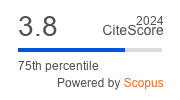Article | Open Access
Urbanization Patterns around the North Sea: Long-Term Population Dynamics, 1300–2015
| Views: | 2561 | | | Downloads: | 1414 |
Abstract: Around the North Sea, how have port cities and cities in the hinterlands of port cities influenced one another in the past? What possible links are there between population trends in various urban areas and time periods? Is it possible to identify the origin of the urbanization patterns around the North Sea? To understand the current era of urbanization, we need to analyze historical trends and urbanization patterns in the long term. By mapping the population figures for eight moments in history and combining this with data on political boundaries and large infrastructures that facilitate flows of goods and people, this article aims to contribute to an improved understanding of contemporary and historical urbanization trends around the North Sea. It also presents the first spatial dataset on urban settlements around the North Sea by means of a series of demographic maps, from 1300 to 2015. It provides a detailed explanation of the method used for mapping and handling demographical data. Each map is accompanied by a brief explanation of the urbanization pattern, with special attention to identifying demographic and economic developments and possible clarifications for centers of gravity and shifts. The maps lay the foundation for further research on social patterns and spatial developments in urban (port) regions around the North Sea and for understanding urban culture through space and time. Port cities must be analyzed from the perspective of the sea, which requires a rethinking of data sets and data borders, to understand the ways in which these port cities have served as porous distribution hubs and as transit nodes for boundary-crossing flows.
Keywords: demography; geo-spatial mapping; infrastructure; North Sea region; political boundaries; population numbers; port cities; urbanization patterns
Published:
© Yvonne van Mil, Reinout Rutte. This is an open access article distributed under the terms of the Creative Commons Attribution 4.0 license (http://creativecommons.org/licenses/by/4.0), which permits any use, distribution, and reproduction of the work without further permission provided the original author(s) and source are credited.


